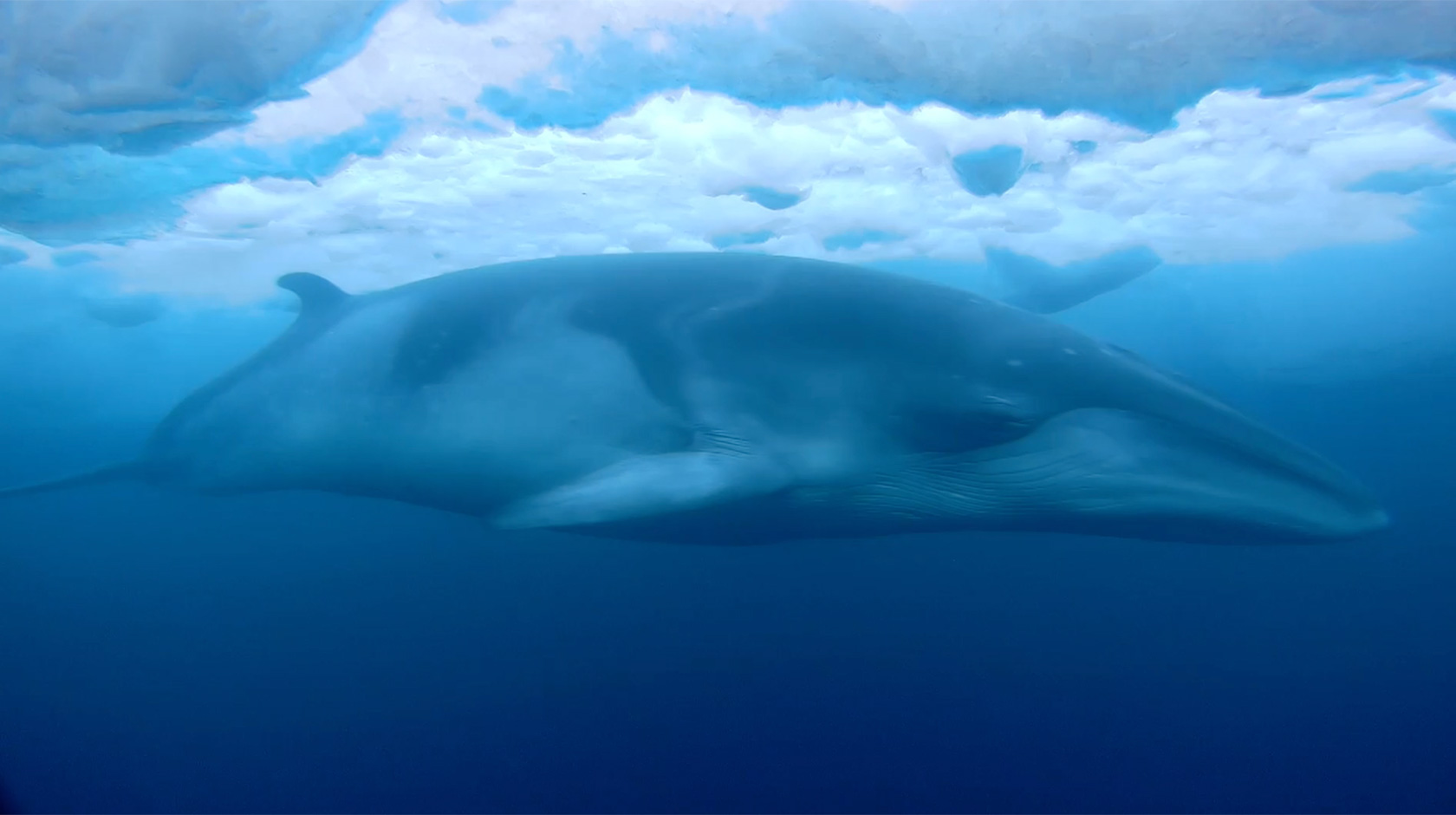Dream-Like Video Captures Minke Whale Gliding Beneath Antarctic Ice
The dream-like whale video was captured by Regina Eisert, a marine mammal expert at the University of Canterbury, in New Zealand, during a recent Antarctic expedition. She was trying out a new underwater-camera prototype designed by Anthony Powell, an Antarctic filmmaker at production company Antzworks, only realizing later that she might have captured the first underwater video of a minke whale in sea ice in the Ross Sea, she said.
"The whole whale glides past — this is such a lucky shot," Eisert said in a statement, referring to the footage. [In Photos: Tracking Humpback Whales in the South Pacific Ocean]
These black-and-white minke whales (Balaenoptera acutorostrata) can grow to be 33 feet (10 meters) long and weigh some 10 tons (9 metric tons), according to Antarctica New Zealand, the government agency responsible for carrying out New Zealand's scientific and environmental-protection projects in Antarctica. Like other baleen whales, minke whales use sieve-like plates in their mouths to filter out tiny prey for food. In the case of minke whales, they filter out krill, which are small crustaceans near the bottom of the Southern Ocean's food web.

In the video, the whale pokes one of its distinct flippers, showing off a diagonal white band on its surface. Then, it pushes its nose through a patch of water, launching a mist through its blowhole.
"The plan was to film continuously across the icebreaker channel that is prepared for the re-supply vessel to cross McMurdo Sound," Eisert said in the statement. "The water's so clear, you can see right across the 50-80 m [160 to 260 feet] lane and monitor all the whales that use the channel. Unfortunately, the system only recorded for just a few hours, due to 'teething problems' for this new technology in the field."
Eisert added, "We had no idea that we had this footage until Anthony found it when checking the camera back in Christchurch [New Zealand]."
During the research expeditions, Eisert and her team not only take pictures but also, when they can, take samples from the whales.
Sign up for the Live Science daily newsletter now
Get the world’s most fascinating discoveries delivered straight to your inbox.
"We can learn so much from a small tissue sample, such as their diet — we think they just eat krill, but do they eat small fish as well?" Eisert asked. "Also, DNA analysis can tell us whether Ross Sea minkes are separate from other minke whales on the Antarctic Peninsula or farther north, or if they are all part of one larger population."
Minke whales may also be responsible for a mysterious ocean sound, dubbed the Western Pacific Biotwang, that incorporates low-frequency moaning with a high-pitched twangy sound, according to scientists who recorded the never-heard-before whale call in the Mariana Trench in 2016. Minke whales were also found to be the culprits of a "bio-duck" sound often recorded in the Southern Ocean, Live Science previously reported.
Original article on Live Science.
Jeanna Bryner is managing editor of Scientific American. Previously she was editor in chief of Live Science and, prior to that, an editor at Scholastic's Science World magazine. Bryner has an English degree from Salisbury University, a master's degree in biogeochemistry and environmental sciences from the University of Maryland and a graduate science journalism degree from New York University. She has worked as a biologist in Florida, where she monitored wetlands and did field surveys for endangered species, including the gorgeous Florida Scrub Jay. She also received an ocean sciences journalism fellowship from the Woods Hole Oceanographic Institution. She is a firm believer that science is for everyone and that just about everything can be viewed through the lens of science.










